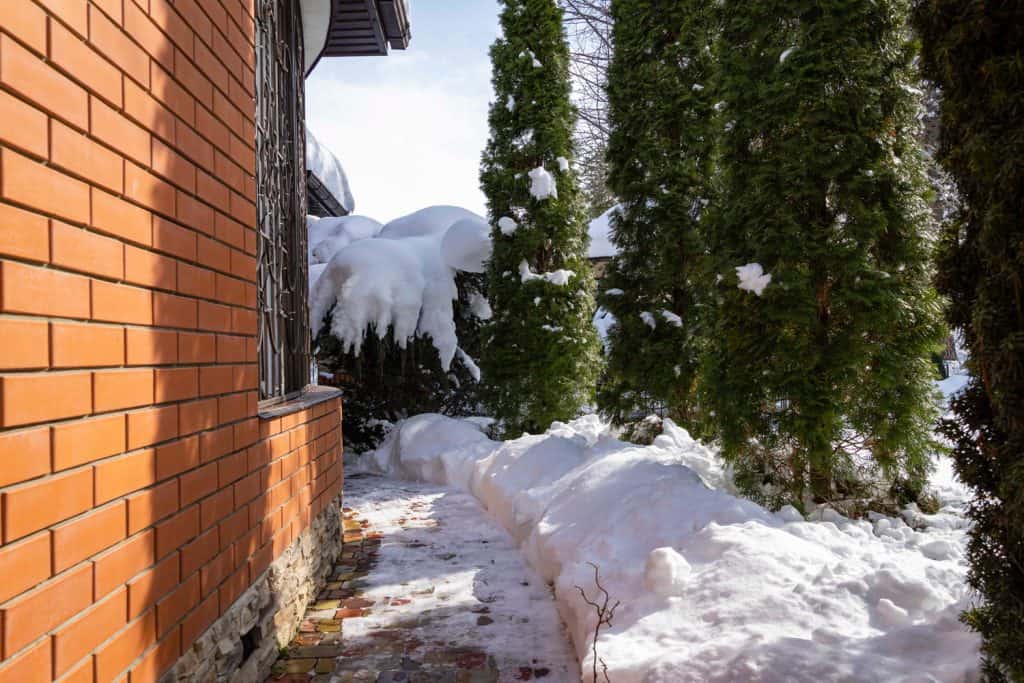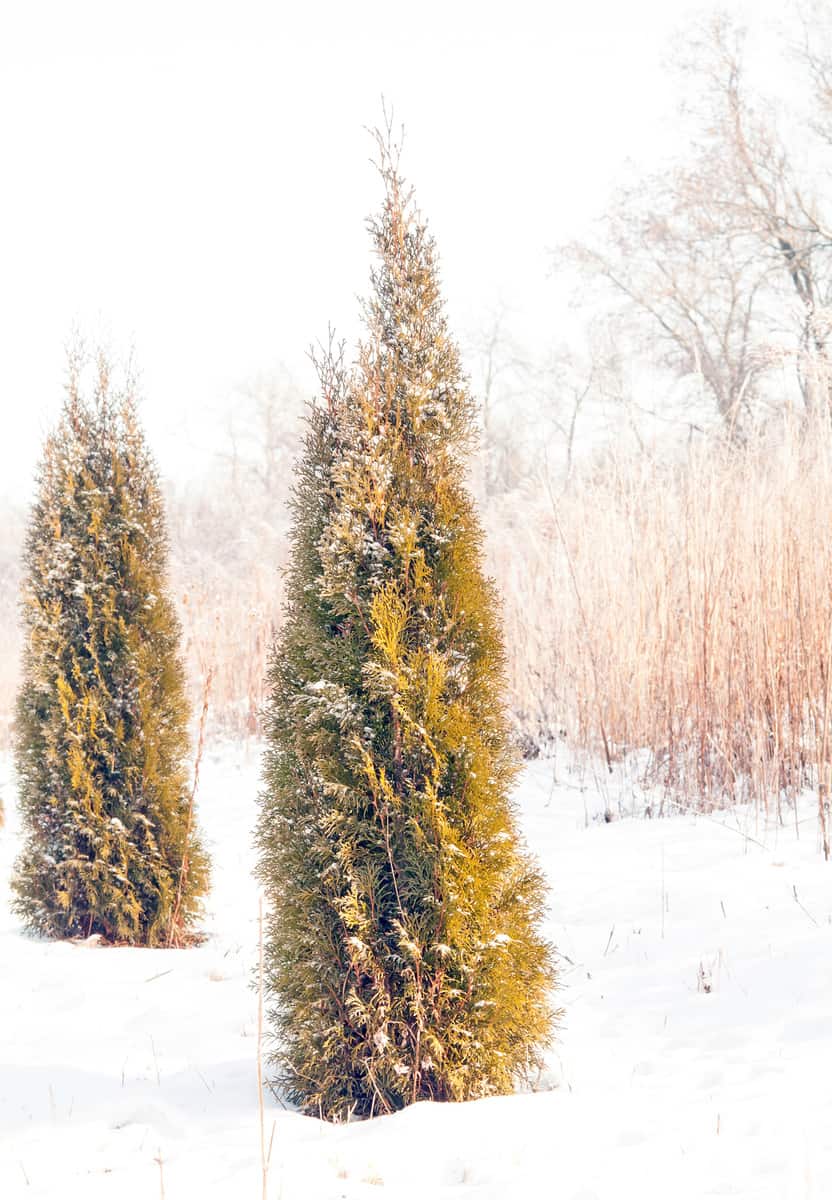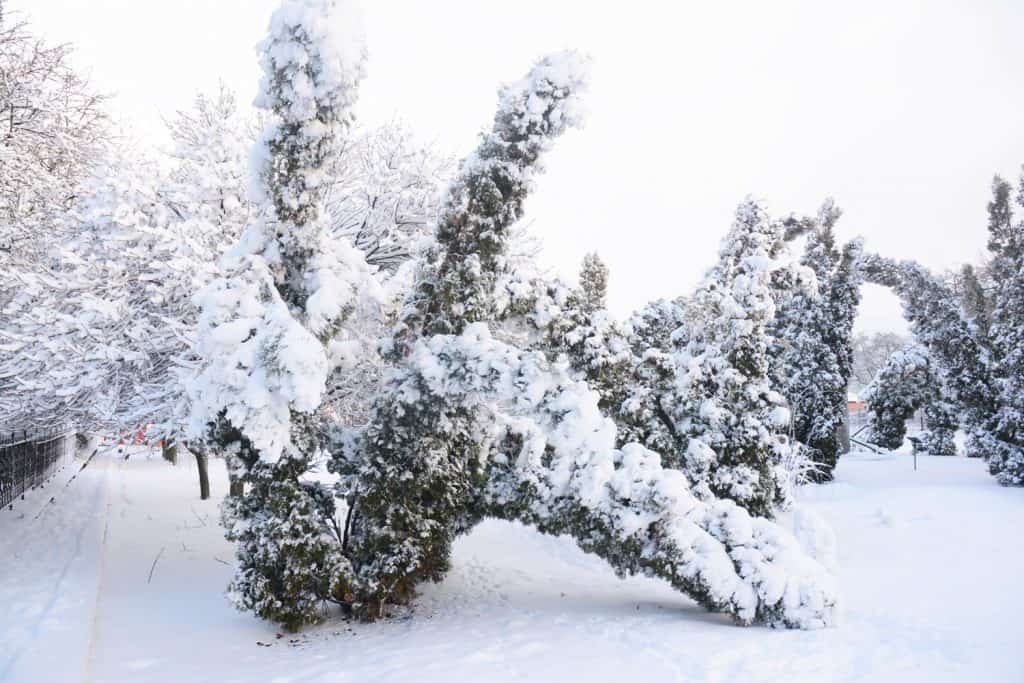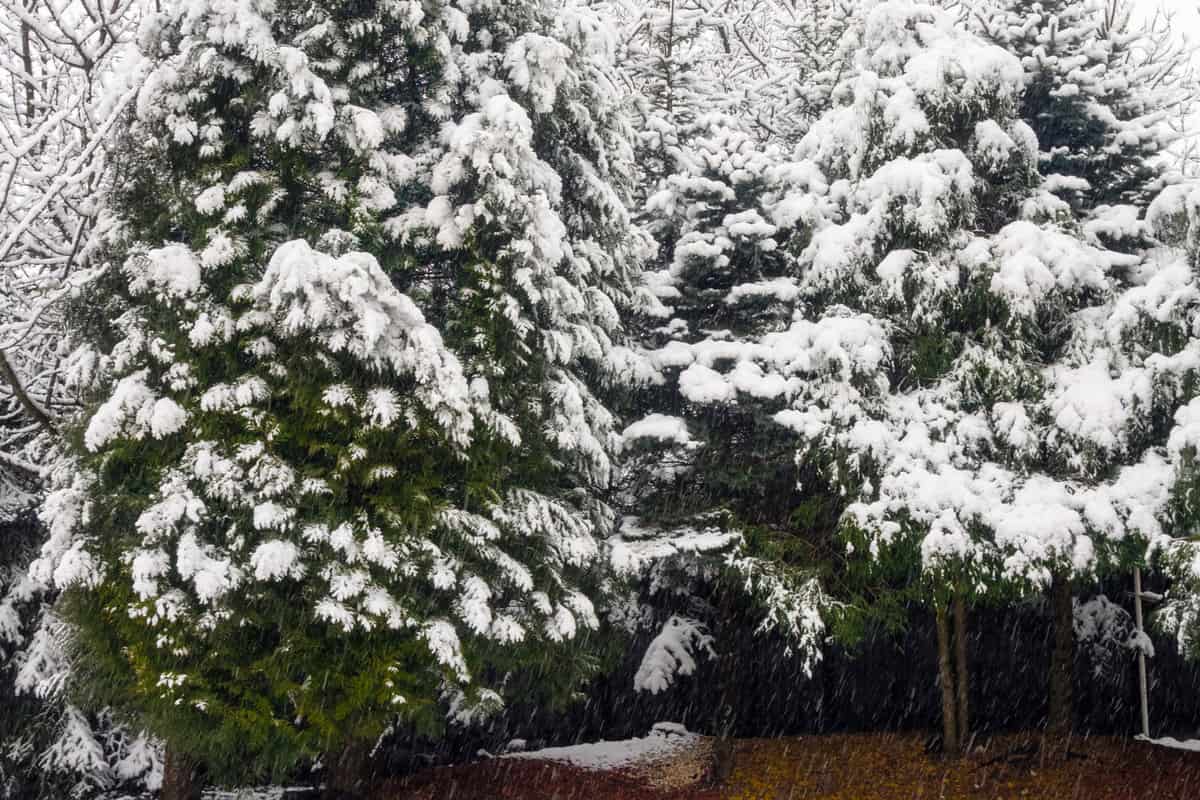Winter weather conditions can wreak havoc on plants if they aren't protected properly. That's why people often cover or wrap their plants to protect them from frost and snow. But what about your larger arborvitae trees and shrubs? Should you wrap them for the winter? We've researched this to give you the information you need.
Arborvitae are generally pretty hardy, but they aren't immune to damage caused by winter weather conditions. If you live somewhere with extreme winter weather conditions and low temperatures, or your arborvitae are newly established, it is a good idea to wrap them for the winter.
Whether you planted arborvitae for privacy or just to improve the landscape of your yard, you likely spent a lot of time and money in your plants. The last thing you want is for your trees to die over the winter. In this article, we'll share the best practices for how to prepare and wrap arborvitae so that they make it through the winter unscathed.

How Do You Prepare Arborvitae For Winter?
We all know what a beautiful sight it is to see snow on evergreen trees and shrubs like arborvitae. Even though snow itself isn't necessarily the problem, it's other conditions that accompany snow that can cause undue stress to arborvitae trees and shrubs. Too much stress to plants can cause them to become unhealthy or even kill them.

That's why it is important to properly prepare arborvitae for winter before winter conditions actually arrive. Here are some steps to take to ensure that your arborvitae are protected all winter long.
Provide Adequate Water
Winter weather conditions can cause plants to lose moisture and dry out. It is important to provide plenty of water to arborvitae shrubs and trees throughout the growing season. Make sure that the ground around your arborvitae stays moist from spring all the way through autumn.
You should also thoroughly water trees and shrubs on winter days where it is warmer or more sunny than usual. This will help replenish any moisture that was lost. The warmer temperatures will help to keep the water from freezing, which could cause damage to your arborvitae.
Maintain A Layer Of Mulch
Even if you don't maintain a thick layer of mulch all year long, you should apply mulch around the base of arborvitae before winter comes. Mulch helps to protect the roots of the tree. And since the roots help provide the foundation, you want to protect them as much as possible.
If the roots become damaged, the tree can't absorb nutrients as effectively. Usually, a 4-inch layer of mulch is enough to protect the roots from losing moisture and prevent damage due to other winter conditions.
See also: Do Arborvitae Have Invasive Roots?
Wrap The Tree/Shrub
One of the best protection methods for arborvitae during the winter is to wrap them. This is especially necessary if the tree or shrub is newly established. Fully mature arborvitae is often strong enough to survive winter conditions without being wrapped, but newly planted arborvitae is not.
Wrapping the tree provides a layer between the branches and the outside conditions. Basically, it helps to keep out winter weather and prevent moisture from escaping. Depending on the variety of arborvitae, it may be too tall to wrap fully. But it is a good idea to wrap any smaller arborvitae shrubs in order to protect them.
What Could Happen If You Don't Wrap Arborvitae?

You may be hesitant to wrap your arborvitae because it can be expensive and time-consuming. But the pros of wrapping arborvitae far outweigh the cons, especially when compared to how much time and money you spent planting them in the first place.
The biggest concern surrounding arborvitae in the winter is damage to foliage. Arborvitaes are evergreen plants, which means that they don't lose their foliage during winter. But if the foliage is unprotected, it is susceptible to winter burn. Winter burn can cause the normally green foliage to become discolored and turn brown.
Snow isn't the cause for winter burn as snow can actually help to protect the foliage. But other winter weather conditions including hard frost, strong winds, and even bright sunlight can all cause winter burn. Even the salt that is used to clear snow off of roadways can cause winter burn.
Another reason to wrap arborvitae is to protect it from getting eaten by wildlife such as deer. Deer tend to eat arborvitae foliage only because it is the only green foliage they can find. However, deer may not be an issue in all areas.
So as you can see, even though it is time consuming, wrapping young arborvitae is the best way to protect them during winter conditions. You don't want to be left with brown and dried-up trees and shrubs when spring rolls back around.
When Should I Wrap My Evergreens For Winter?
There's not an exact time for when you should wrap evergreens like arborvitae for winter. This is because the start date for winter-like conditions varies based on location and on a year-by-year basis. In some places, winter conditions can even start before it's actually wintertime.
For this reason, the general guideline is to wrap evergreen trees in the fall before the first frost. This is especially important for the first two winters after a tree has been planted. If the tree is older and you miss wrapping it before that point, it shouldn't cause too much damage. But you should definitely wrap it before winter actually starts. Leave the tree wrapped until after the last frost in the spring.
What Can I Use For Tree Wrap?
Burlap is the best tree wrap option for young evergreen trees like arborvitae. This is because the young trees aren't well established. Burlap gives protection while still allowing more air to circulate through the branches compared to other types of tree wrap. It is also affordable and eco-friendly, and you can use a roll of burlap fabric instead of purchasing a special wrap.
Click here to see this burlap fabric on Amazon.
How To Wrap Arborvitae Using Burlap
The best way to wrap arborvitae with burlap is to wrap the burlap loosely around the tree. You don't want to make it too tight or else you could break the branches or restrict the air and moisture flow. Follow these steps:
- Hold the roll of burlap in your hands and loosely circle the tree with it.
- Go up a little farther with the burlap every time you circle the tree.
- Use a ladder to reach higher areas. Just be sure to get someone to help hold the ladder.
- It's okay if you can't reach the very top. A few inches need to remain exposed to allow water and sunlight to reach the tree.
- Secure the burlap with enough pins or clips so that it is secure and won't fall off or come loose.
See also: How Big Do Arborvitae Get?
Is It Normal For Arborvitae To Turn Brown In Fall?
Some browning of arborvitae in the fall is normal, especially to the innermost foliage. While evergreen trees don't shed all of their needles, they will shed some of the older ones to make room for new growth. If some of the foliage turns brown and drops off, then it is totally normal and usually not a cause for concern.
However, if a significant amount of foliage is turning brown, it could be a sign of a more serious problem. Look for signs of disease or evidence of an insect infestation, as these could all be reasons for the leaves of arborvitae to turn brown. If none of these are the problem, then lack of water is most likely the cause, especially for newer trees.
How Do You Protect Arborvitae From Heavy Snow?

Heavy snow can cause the branches of arborvitae to permanently bend, so it's important to protect them. Of course the best way is to wrap them, but this can be hard to do for arborvitae trees and shrubs that are used as a privacy fence.
If wrapping arborvitae isn't an option, the next best thing you can do is tie the branches together. This will give the branches more support and keep them from bending and possibly breaking due to the weight of snow. The following video shows how to tie arborvitae branches:
Can Arborvitae Recover From Winter Burn?
As long as the bud and stem tip of the winter burnt areas aren't damaged, then the tree will recover and new plant foliage will grow. However, if the bud and stem tip were damaged, you will need to prune the tree back to ¼" above a live bud and let new growth form from there.
In Closing

We hope this guide has given you plenty of information about why it is necessary to wrap arborvitae for the winter. It's the best way to protect the tree from winter burn, especially if the tree is less than two years old. Thanks for reading!


When wrapping a 3 foot tall newly planted green giant arborvitae. Do you overlap the burlap. Or leave gaps in between the burlap that you can see the evergreen through.
@Duane Broadway, some gaps will be fine. It improves air circulation.
Hello,
I just planted 15 Aborvitae 4 foot plants and made two rows.
do I have to wrap them individually? I do have a lot of deers. or can I do 2 long wraps?